 W
WThis is a list of World War II conferences of the Allies of World War II. Conference names in boldface indicate the conferences at which the leaders of the United States, the United Kingdom, and the Soviet Union were all present. For the historical context see Diplomatic history of World War II.
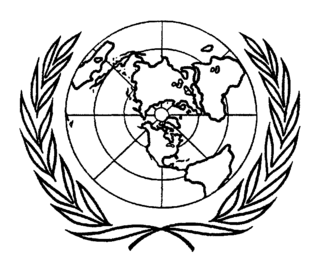 W
WThe United Nations Conference on International Organization (UNCIO), commonly known as the San Francisco Conference, was a convention of delegates from 50 Allied nations that took place from 25 April 1945 to 26 June 1945 in San Francisco, California, United States of America. At this convention, the delegates reviewed and rewrote the Dumbarton Oaks agreements of the previous year. The convention resulted in the creation of the United Nations Charter, which was opened for signature on 26 June, the last day of the conference. The conference was held at various locations, primarily the War Memorial Opera House, with the Charter being signed on 26 June at the Herbst Theatre in Civic Center. A square adjacent to the city's Civic Center, called "UN Plaza", commemorates the conference.
 W
WThe Adana Conference or Yenice Conference was a meeting between Turkish President İsmet İnönü and British Prime Minister Winston Churchill in a railway car parking on a storage track at Yenice, near Adana on 30–31 January 1943, where Churchill tried to persuade İnönü to join the Allied powers and fight the Axis powers during World War II.
 W
WThe Atlantic Charter was a statement issued on 14 August 1941 that set out American and British goals for the world after the end of World War II.
 W
WThe Bermuda Conference was an international conference between the United Kingdom and the United States held from April 19 to 30, 1943, at Hamilton, Bermuda. The topic of discussion was the question of Jewish refugees who had been liberated by Allied forces and those who still remained in Nazi-occupied Europe. The only agreement reached was that the war must be won against the Nazis. US immigration quotas were not raised, and the British prohibition on Jewish refugees seeking refuge in Mandatory Palestine was not lifted.
 W
WThe Brazzaville Conference was a meeting of prominent Free French leaders held in January 1944 in Brazzaville, the then-capital of French Equatorial Africa, during World War II.
 W
WThe Bretton Woods Conference, formally known as the United Nations Monetary and Financial Conference, was the gathering of 730 delegates from all 44 Allied nations at the Mount Washington Hotel, situated in Bretton Woods, New Hampshire, United States, to regulate the international monetary and financial order after the conclusion of World War II.
 W
WThe Cairo Conference of November 22–26, 1943, held in Cairo, Egypt, outlined the Allied position against Japan during World War II and made decisions about postwar Asia.
 W
WThe Casablanca Conference or Anfa Conference was held at the Anfa Hotel in Casablanca, French Morocco, from January 14 to 24, 1943, to plan the Allied European strategy for the next phase of World War II. In attendance were United States President Franklin D. Roosevelt and British prime minister Winston Churchill. Also attending were the sovereign of Morocco Sultan Muhammad V and representing the Free French forces Generals Charles de Gaulle and Henri Giraud, but they played minor roles and were not part of the military planning. USSR General Secretary Joseph Stalin had declined to attend, citing the ongoing Battle of Stalingrad as requiring his presence in the Soviet Union.
 W
WThe 1944 Commonwealth Prime Ministers' Conference was the first Meeting of the Heads of Government of the British Commonwealth. It was held in the United Kingdom, between 1–16 May 1944, and was hosted by that country's Prime Minister, Winston Churchill.
 W
WThe Congress of Përmet, was a meeting of the Albanian communist leaders on May 24, 1944, in Përmet, Albania, which elected a Provisional Government. The congress was modeled after the Anti-Fascist Council for the National Liberation of Yugoslavia.
 W
WThe Dumbarton Oaks Conference or, more formally, the Washington Conversations on International Peace and Security Organization was an international conference at which the United Nations was formulated and negotiated among international leaders. The conference was held at Dumbarton Oaks, in Washington, D.C., from August 21, 1944, to October 7, 1944.
 W
WThe First Quebec Conference, codenamed "QUADRANT", was a highly secret military conference held during World War II by the governments of the United Kingdom, Canada, and the United States. It took place in Quebec City on August 17–24, 1943, at both the Citadelle and the Château Frontenac. The chief representatives were Winston Churchill and Franklin D. Roosevelt, hosted by the Canadian prime minister William Lyon Mackenzie King.
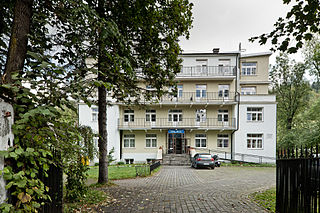 W
WThe Gestapo–NKVD conferences were a series of security police meetings organised in late 1939 and early 1940 by Germany and the Soviet Union, following the invasion of Poland in accordance with the Molotov-Ribbentrop Pact. The meetings enabled both parties to pursue specific goals and aims as outlined independently by Hitler and Stalin, with regard to the acquired, formerly Polish territories. The conferences were held by the Gestapo and the NKVD officials in several Polish cities. In spite of their differences on other issues, both Heinrich Himmler and Lavrentiy Beria had similar objectives as far as the fate of the prewar Poland was concerned.
 W
WThe Greater East Asia Conference was an international summit held in Tokyo from 5 to 6 November 1943, in which the Empire of Japan hosted leading politicians of various component members of the Greater East Asia Co-Prosperity Sphere. The event was also referred to as the Tokyo Conference.
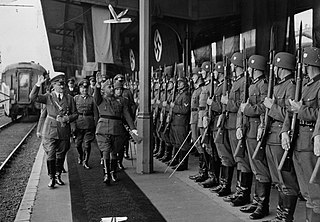 W
WThe Meeting of Hendaye, or interview of Hendaye, took place between Francisco Franco and Adolf Hitler on 23 October 1940 at the railway station in Hendaye, France, near the Spanish–French border. The meeting was also attended by the respective foreign ministers, Ramón Serrano Súñer of Francoist Spain and Joachim von Ribbentrop of Nazi Germany.
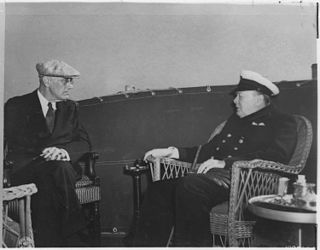 W
WThe Malta Conference was held from January 30 to February 3, 1945 between President Franklin D. Roosevelt of the United States and Prime Minister Winston Churchill of the United Kingdom on the island of Malta. The purpose of the conference was to plan the final campaign against the Germans with the Combined Chiefs of Staff. Both leaders agreed on the undesirability of the Red Army advancing into central Europe.
 W
WThe Third Moscow Conference between the major Allies of World War II took place during October 18 to November 11, 1943, at the Moscow Kremlin and Spiridonovka Palace. It was composed of major diplomats, ministers and generals, who discussed cooperation in the war effort, and issued the Moscow Declaration.
 W
WThe Panama Conference was a meeting by representatives of the United States and twenty other American states held in Panama on September 23, 1939, shortly after the beginning of World War II in Europe.
 W
WThe Potenji River Conference, also known as the Natal Conference, was a meeting that took place on January 28 and 29, 1943 between the President of Brazil, Getúlio Vargas and the President of the United States, Franklin Delano Roosevelt. On his way back from the Casablanca Conference, the U.S. president paid a visit to the Brazilian president and inspected some of the military installations that were sending aircraft and equipment to the fronts in Africa and Asia. The visit also involved discussions of the ongoing support and role of Brazil in World War II. This conference between the presidents of the two countries took place aboard the USS Humboldt in the Potenji River harbor in Natal, Rio Grande do Norte and defined the agreements that led to the creation of the Brazilian Expeditionary Force.
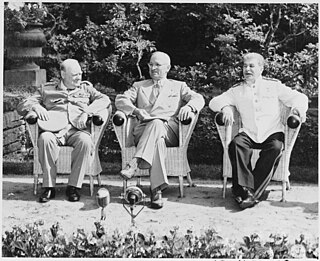 W
WThe Potsdam Conference was held in Potsdam, Germany, from July 17 to August 2, 1945. The participants were the Soviet Union, the United Kingdom, and the United States, represented respectively by Premier Joseph Stalin, Prime Ministers Winston Churchill and Clement Attlee, and President Harry S. Truman. They gathered to decide how to administer Germany, which had agreed to unconditional surrender nine weeks earlier on the 8th of May. The goals of the conference also included the establishment of the postwar order, peace treaty issues, and countering the effects of the war.
 W
WThe Salzburg Conference was a conference between Nazi Germany and the Slovak State, held on 28 July 1940, in Salzburg, Reichsgau Ostmark. The Germans demanded the expulsion of the Nástup faction of the Slovak People's Party from the Slovak government because of its independent foreign policy, threatening to unilaterally revoke the protection guarantees that Slovakia had obtained in the 1939 German–Slovak treaty.
 W
WThe Second Cairo Conference of December 4–6, 1943, held in Cairo, Egypt, addressed Turkey's possible contribution to the Allies in World War II. The meeting was attended by President Franklin D. Roosevelt of the United States, Prime Minister Winston Churchill of the United Kingdom, and President İsmet İnönü of the Republic of Turkey.
 W
WThe Second Quebec Conference was a high-level military conference held during World War II by the British and American governments. The conference was held in Quebec City, September 12 – September 16, 1944, and was the second conference to be held in Quebec, after "QUADRANT" in August 1943. The chief representatives were Winston Churchill, Franklin D. Roosevelt and the Combined Chiefs of Staff. Canada's Prime Minister William Lyon Mackenzie King was the host but did not attend the key meetings.
 W
WThe Sword of Stalingrad is a bejewelled ceremonial longsword specially forged and inscribed by command of King George VI of the United Kingdom as a token of homage from the British people to the Soviet defenders of the city during the Battle of Stalingrad. On 29 November 1943, it was presented to Marshal Joseph Stalin by British Prime Minister Winston Churchill at a ceremony during the Tehran Conference, in the presence of President Franklin D. Roosevelt and an honour guard.
 W
WThe Tehran Conference was a strategy meeting of Joseph Stalin, Franklin D. Roosevelt, and Winston Churchill from 28 November to 1 December 1943, after the Anglo-Soviet Invasion of Iran. It was held in the Soviet Union's embassy in Tehran, Iran (Persia). It was the first of the World War II conferences of the "Big Three" Allied leaders. It closely followed the Cairo Conference which had taken place on 22–26 November 1943, and preceded the 1945 Yalta and Potsdam conferences. Although the three leaders arrived with differing objectives, the main outcome of the Tehran Conference was the Western Allies' commitment to open a second front against Nazi Germany. The conference also addressed the 'Big Three' Allies' relations with Turkey and Iran, operations in Yugoslavia and against Japan, and the envisaged post-war settlement. A separate protocol signed at the conference pledged the Big Three to recognize Iran's independence.
 W
WThe Wannsee Conference was a meeting of senior government officials of Nazi Germany and Schutzstaffel (SS) leaders, held in the Berlin suburb of Wannsee on 20 January 1942. The purpose of the conference, called by the director of the Reich Main Security Office SS-Obergruppenführer Reinhard Heydrich, was to ensure the co-operation of administrative leaders of various government departments in the implementation of the Final solution to the Jewish question, whereby most of the Jews of German-occupied Europe would be deported to occupied Poland and murdered. Conference participants included representatives from several government ministries, including state secretaries from the Foreign Office, the justice, interior, and state ministries, and representatives from the SS. In the course of the meeting, Heydrich outlined how European Jews would be rounded up and sent to extermination camps in the General Government, where they would be killed.
 W
WThe third Washington Conference was held in Washington, D.C from May 12 to May 25, 1943. It was a World War II strategic meeting between the heads of government of the United Kingdom and the United States. It was the third conference of the 20th century, but the second conference that took place during the US involvement in the Second World War. The delegations were headed by Winston Churchill and Franklin D. Roosevelt, respectively.
 W
WThe Yalta Conference, also known as the Crimea Conference and code-named Argonaut, held February 4–11, 1945, was the World War II meeting of the heads of government of the United States, the United Kingdom, and the Soviet Union to discuss the postwar reorganization of Germany and Europe. The three states were represented by President Franklin D. Roosevelt, Prime Minister Winston Churchill, and Premier Joseph Stalin, respectively. The conference was held near Yalta in Crimea, Soviet Union, within the Livadia, Yusupov, and Vorontsov Palaces.